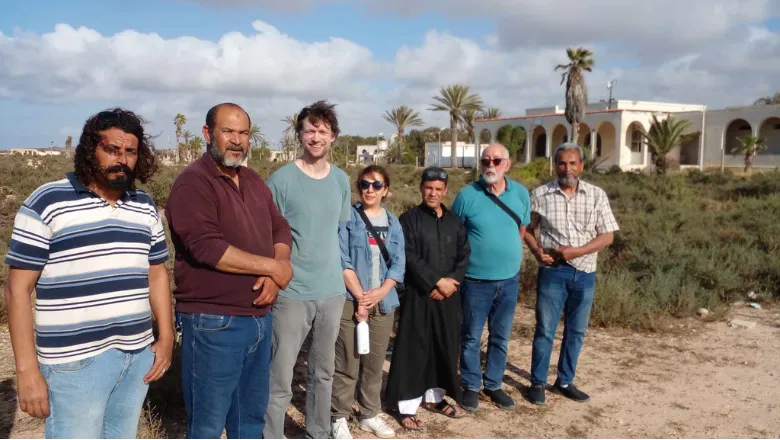During this trip, we observed firsthand the impact of climate change on coastal archaeology, including threats from storm flooding, long-term sea-level rise, and coastal erosion. Collaborating with the Department of antiquities and working together on-site was a valuable experience that brought our collective expertise and interests together, helping us to develop the best approaches for heritage management.
Dr Hiba Alkhalaf, Postdoctoral Research Associate Dept of Classics
14 August 2024
Classics project team visit Libya to help preserve cultural heritage
Researchers carried out vegetation management, essential for mitigating fire hazards during high summer temperatures and preventing damage to both standing and buried structures.

The Department of Classics' The Managing Libyan Cultural Heritage Project (MaliCH) project team have completed a field trip to Libya, visiting Tripoli and the two world heritage sites of Sabratha, and Lepcis Magna. Conducted in May 2024, in collaboration with the Libyan Department of Antiquities (DoA), this mission represents a significant step in preserving Libya's rich cultural heritage and follows a previous trip in 2023. In particular it addressed the growing threats of both vegetation encroachment and sand movement on coastal archaeological sites.
The first phase, at Sabratha, involved setting up the work teams and operational mechanisms. A 10-day operation followed to manage the plant overgrowth which is a significant threat to the site. This focused on specific areas of the site including areas around the Punic mausoleum, the forum, the theatre and the so-called Office Baths.

Following the work at Sabratha, the team proceeded to Lepcis Magna. This phase builds on the initial efforts in February, which focused on targeted areas within the site including the Punic market, the theatre, the Schola building and Decumanus Maximus and the Hadrianic Baths.
These missions address critical threats facing Libya's coastal archaeological sites, primarily due to aggressive vegetation growth and shifting sands. Effective condition assessments necessitate clearing a range of vegetation, from weeds to larger bushes and trees. The team is now documenting the current site conditions and formulating plans for emergency interventions to safeguard the most vulnerable parts of the sites. The work has also had important local impacts with residents volunteering to help and then forming groups to collect rubbish in the newly cleaned areas.
Collaboration and attendance at an International Congress
In addition to the on-site work, the team engaged with project collaborators from the DoA, reviewing previous work and strategising for the upcoming phases including interventions. The visit coincided with the First International Conference for the Preservation and Protection of Archaeological Sites in Libya. Organised by the European Commission (TAIEX) in collaboration with the DoA, the congress took place at the Red Castle in Tripoli. The MaliCH project was presented by the ALIPH Foundation amongst the other notable efforts taking place across Libya. The efforts made by the project in collaboration with the Ghadames City Promotion and Development Authority (GCPDA) and the DoA were highlighted, especially the shared work on developing documents aimed at removing World Heritage Sites from the UNESCO Danger List.
As the project continues to address the challenges facing Libya's coastal sites, the work not only protects historical treasures but also sets a precedent for future conservation missions.
Team:
Dr Hiba Alkhalaf, Dr Hafed Walda, Dr Will Wootton,


